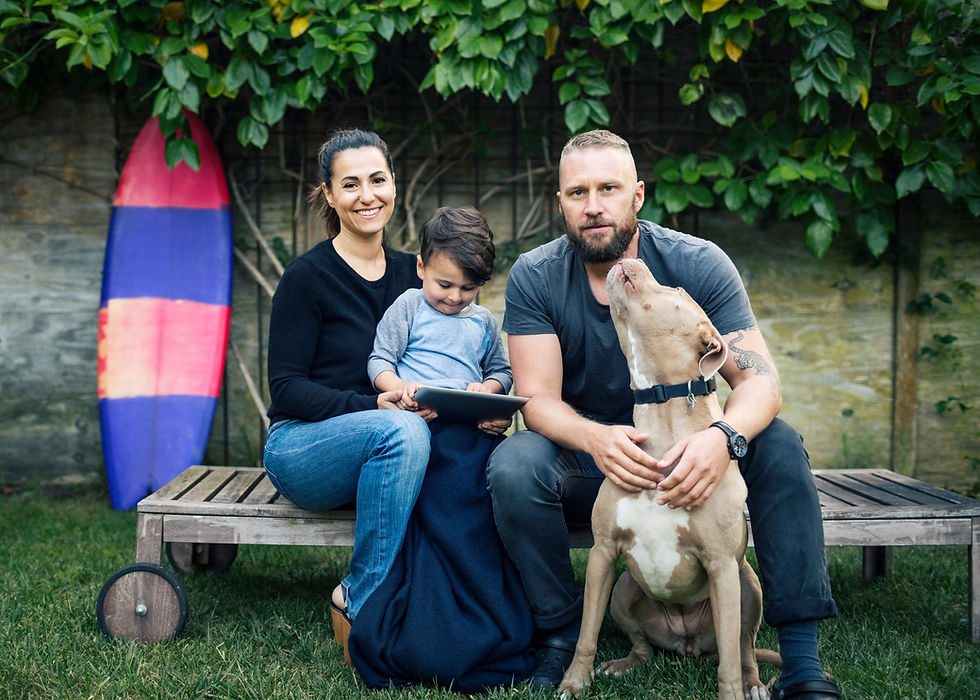Canine Enrichment: What, why, when, where, how
- Rhiannon

- Sep 23, 2024
- 4 min read

What is canine enrichment?
Canine enrichment refers to any activity that enhances a dog's mental, physical, and emotional wellbeing, and often involves allowing them the freedom to just be dogs. Toys are one of the most commonly used forms of enrichment, but there are many others: games, puzzles, nose-work, long walks that allow time for sniffing, training sessions, dog sports, and more. Let's take a deeper look into canine enrichment.
Why enrichment is important.
Our dogs are much like us when it comes to mental, emotional, and physical needs. Think of the last time you explored a new place, tried a new dish at a new restaurant, met up with friends, or successfully completed a challenging task - did you feel fulfilled? Excited? Happy? Research [e.g., 1, 2] shows that dogs experience similar emotions and benefits from similar kinds of activities. Unfortunately, modern living makes it difficult for dogs to fulfill these needs on their own in ways we find acceptable, so they either rely on us, or they will sometimes try to meet their needs on their own. Dogs who aren't getting their needs met may bark more, dig up the yard, chew on household furniture, or develop anxiety and fears.

When and where to provide enrichment.
The more enrichment activities and opportunities our dogs are given, the better! Enrichment can happen almost anytime and anywhere. Daily rituals can be re-vamped to become more enriching, new games and tricks can be taught, or more intensive activities can be introduced.
It's important to keep in mind that every dog is different. Some dogs have energy for days, others need more rest. Sometimes dogs can become overstimulated too, so it's important to listen to your dog's body language and energy. Remember not to discriminate based on size or age - small dogs and old dogs benefit from enrichment activities just as much as bigger and younger dogs, though the enrichment activities for these dogs may look very different.
How to provide enrichment for your dog.
The great thing about canine enrichment is that there are endless ways to enhance your dog's mental, emotional, and physical wellbeing!
Re-vamp daily routines and living spaces
Use a Kong, snuffle mat, or other food puzzle for some meals. Scattering their food in a safe yard can also be fun for your dog.
Allow your dog to choose the direction of walks and let them sniff for as long as they'd like. A dog's sense of smell is extremely important for how they experience the world. Allowing dogs to sniff while on walks helps them better understand their surroundings.
Take your dog on a short car ride to walk somewhere new.
If your dog is well-socialized and comfortable with other dogs, set up a play date or group walk.
Get a new toy, have toys on a rotation, or even just wash an old one. Making these changes with toys every week or two would provide the most benefits. Choosing toys that satisfy your particular dog's needs is important too - if you have a dog who loves to chew on furniture, try a dog-safe wood chew stick. If you have a dog who loves to chase things, try throwing them some tennis balls to chase.
Dogs with access to a secured yard get more out of the space when there's more dog-safe plants in the space [3]. Dogs have an incredible sense of smell, so the different plants will make the space more interesting to them. Additionally, more plants will attract things like butterflies and birds, which may also enhance the space for your dog.

What are some other ways you can think of to change things up for your dog?
Games, puzzles, and training
Simple games can be fun for your dog. One example is hiding a treat in one hand and seeing if your dog can correctly choose which hand holds the treat. You could also place a treat under one of three plastic cups, then rearrange the cups before allowing your dog to choose the one they think the treat is under.
There are many treat puzzle toys and contraptions on the market. There's even a scratch board with a treat-hiding compartment that helps trim a dog's nails in a way that's more fun for the dog than traditional nail trimming experiences.
Teaching your dog a new trick or series of commands even just half an hour per day can boost your dog's confidence and sense of accomplishment.

What kinds of games, puzzles, and training do you think would be fun for you and your dog?
Dog sports
Agility training can be super fun and rewarding for some dogs.
Sniff-work. Teaching a dog how to sniff out and find certain objects can be extremely satisfying and rewarding for dogs.

Do you think your dog would enjoy some more intense activities?
Summary
Providing healthy outlets for your dog's mental, emotional, and physical energy is crucial for having a happy and well-behaved dog. Enrichment activities and opportunities will benefit any dog, regardless of size, age, breed, or limitations. There are endless ways to provide enrichment activities and opportunities for our dogs, and many times they are low-cost or free. Additionally, many times enrichment activities include us, and can strengthen our bond with our dogs.

References
[1] McGowan RT, Rehn T, Norling Y, Keeling LJ. Positive affect and learning: exploring the "Eureka Effect" in dogs. Anim Cogn. 2014 May;17(3):577-87. doi: 10.1007/s10071-013-0688-x. Epub 2013 Oct 6. PMID: 24096703.
[2] Pullen AJ, Merrill RJ, Bradshaw JW. Habituation and dishabituation during object play in kennel-housed dogs. Anim Cogn. 2012 Nov;15(6):1143-50. doi: 10.1007/s10071-012-0538-2. Epub 2012 Jul 24. PMID: 22825035.
[3] Kobelt AJ, Hemsworth PH, Barnett JL, Coleman GJ, Butler KL. The behavior of Labrador retrievers in suburban backyards: The relationship between the backyard environment and dog behaviour. Appl Anim Behav Sci. 2007 Aug;106(1-3):70-84.




Comments